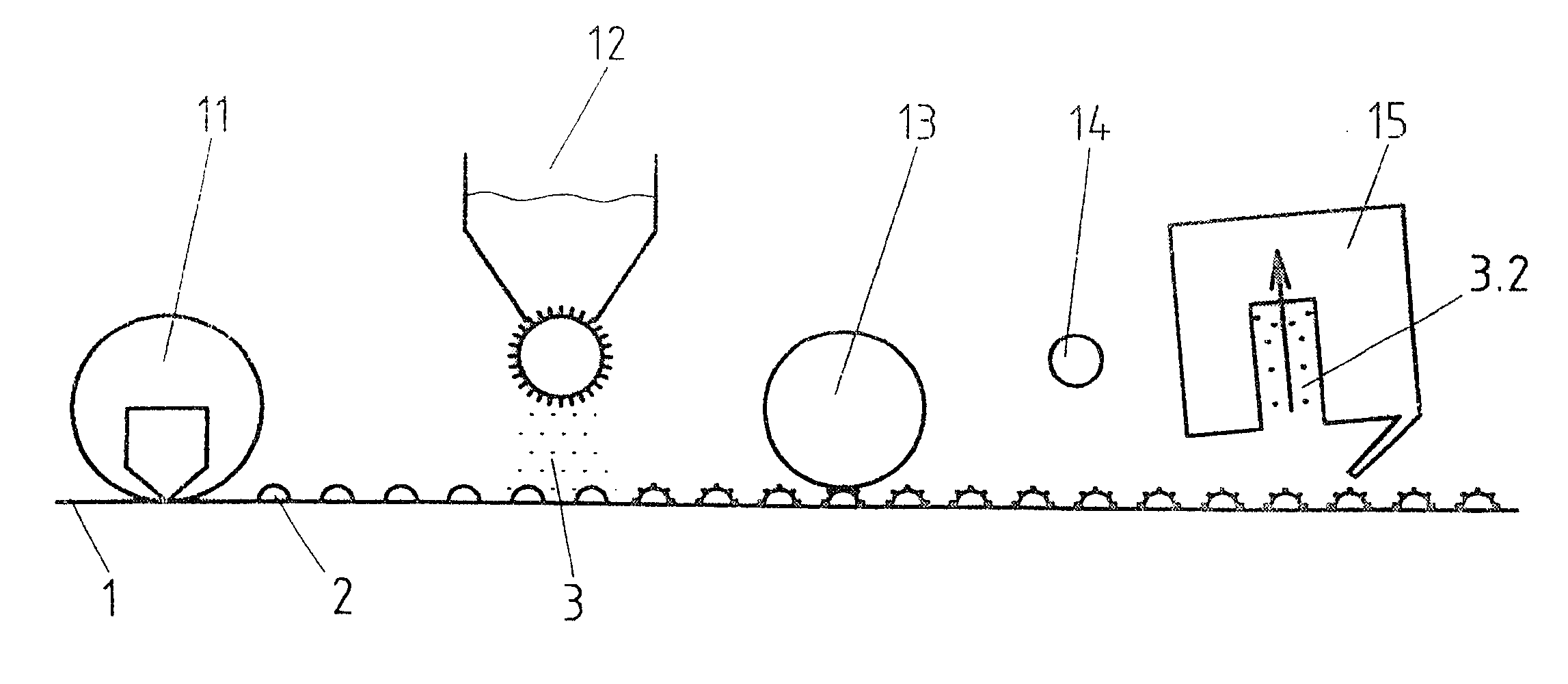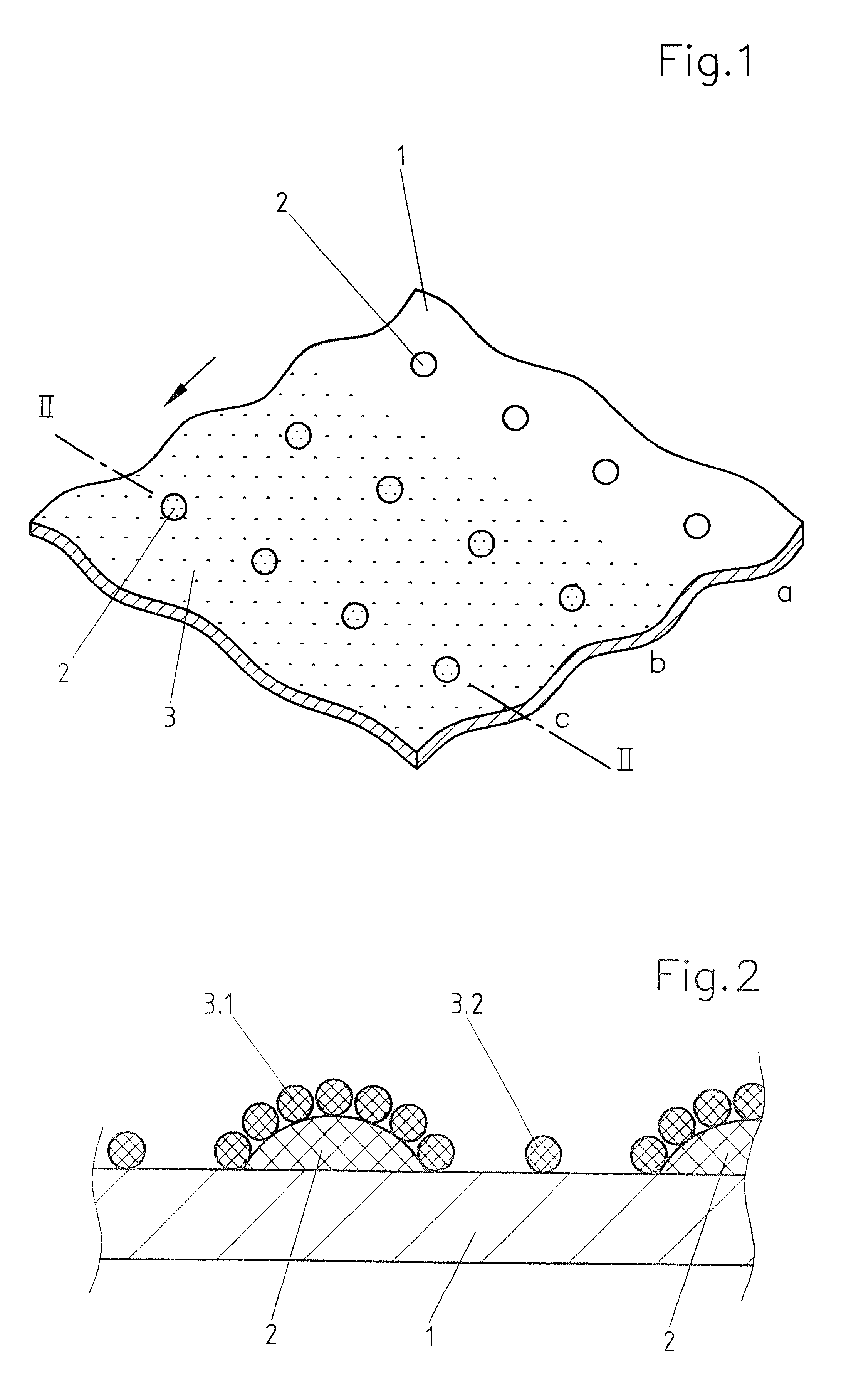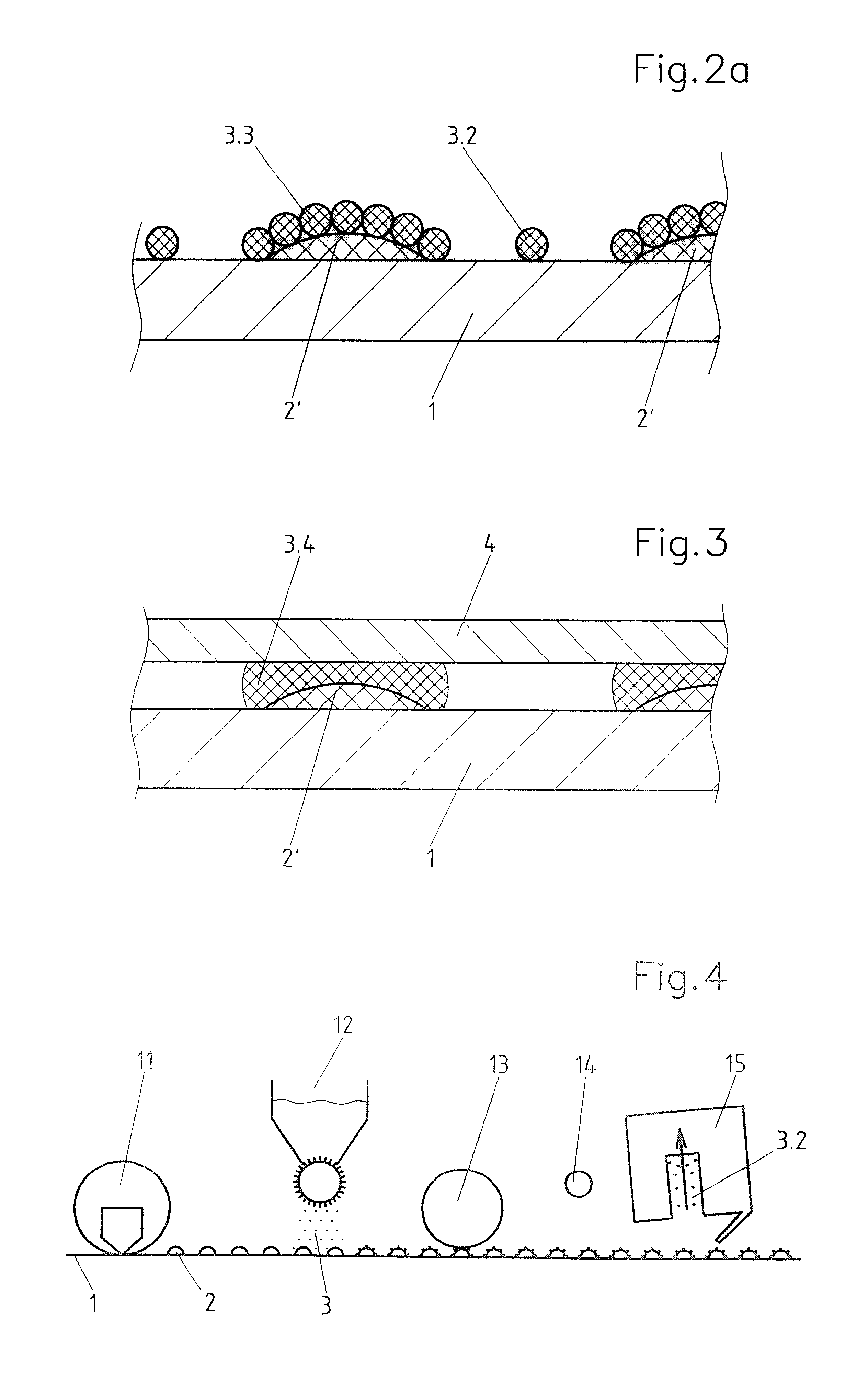Process for the production of fusible interlining fabrics
a technology of interlining fabrics and fabrics, applied in the direction of layered products, transportation and packaging, coatings, etc., can solve the problems of water having to be evaporated, and the risk of bleed-through on the back
- Summary
- Abstract
- Description
- Claims
- Application Information
AI Technical Summary
Benefits of technology
Problems solved by technology
Method used
Image
Examples
example 2
A nonwoven fabric with a weight of 25 mg / m.sup.2 (85% PES / 15% PA6 fibers, thermally bonded using a dot calander) is imprinted with 4 g / m.sup.2 of a PU that crosslinks in the moist state (procured from H. B. Fuller), using the rototherm process, using a CP 37 embossing roller (37 dots / cm.sup.2), at 95.degree. C. Immediately afterward, during the open time of the reactive hot-melt, 24 g / m.sup.2 of a thermoplastic polyamide powder (Platamid H106 from Atochem), with a grain fraction of 0-160 .mu., are applied by blowing them through a powder gun (Nordson system). The polymer particles that were applied adhere to the sticky hot-melt dots (if necessary, bonding is supported by slight pressure); excess powder particles are removed by shaking them off, so that a total of 8 g / m.sup.2 of the polymer powder remains bonded to the reactive mass. To accelerate crosslinking, the goods are steamed. The coated interlining fabric is rolled up. This interlining fabric, with hot-melt glue applied to it...
PUM
| Property | Measurement | Unit |
|---|---|---|
| area | aaaaa | aaaaa |
| adhesive | aaaaa | aaaaa |
| thermoplastic | aaaaa | aaaaa |
Abstract
Description
Claims
Application Information
 Login to View More
Login to View More - R&D
- Intellectual Property
- Life Sciences
- Materials
- Tech Scout
- Unparalleled Data Quality
- Higher Quality Content
- 60% Fewer Hallucinations
Browse by: Latest US Patents, China's latest patents, Technical Efficacy Thesaurus, Application Domain, Technology Topic, Popular Technical Reports.
© 2025 PatSnap. All rights reserved.Legal|Privacy policy|Modern Slavery Act Transparency Statement|Sitemap|About US| Contact US: help@patsnap.com



